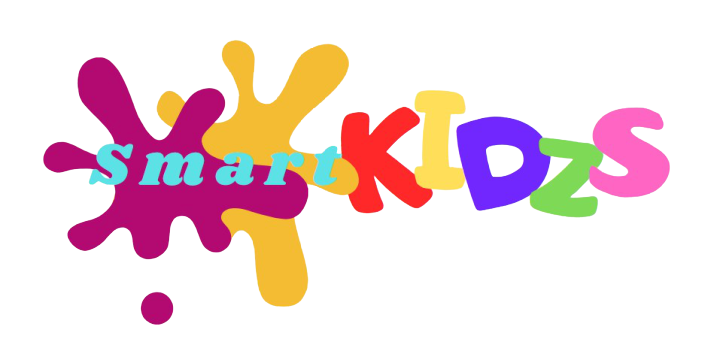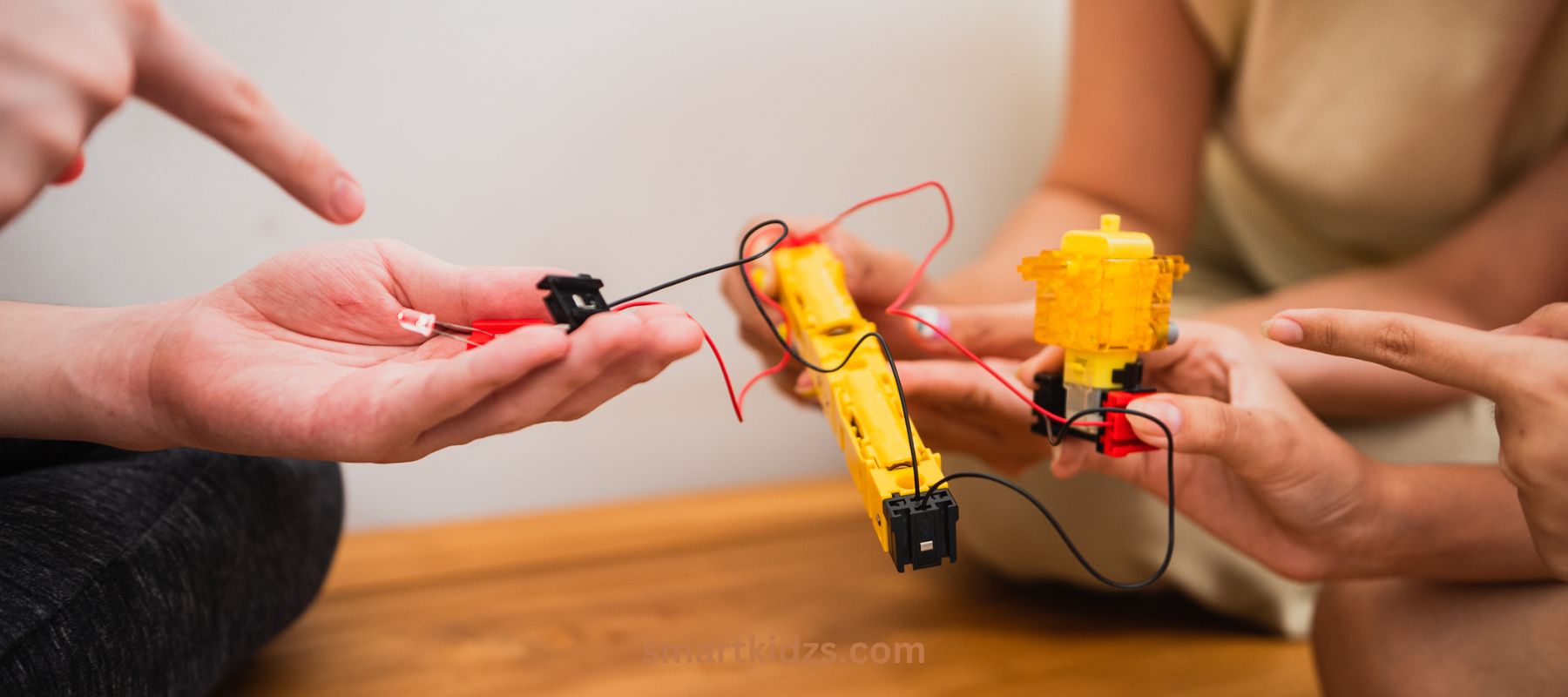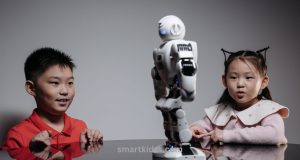STEM kits come packed with hands-on learning, helping children discover Science, Technology, Engineering, and Math around them interactively and fun. The kits are filled with great activities, experiments, and building challenges that require kids to think critically and solve problems while gaining necessary skills for the future.
While the learning world keeps changing, practical experience-based learning is becoming increasingly important. STEM kits will teach children to apply their concepts in real-life situations and help them appreciate complex topics through experimentation and creativity. Whether it is making circuits, programming robots, or doing scientific investigations, these kits enable innovation, curiosity, and life-long learning.
This article will take you through some of the best STEM kits for the year 2025 that promise fun and hands-on experiential learning for young learners. These kits are designed to create awareness, hone problem-solving skills, and nurture the next generation of scientists, engineers, and innovators.
What Are STEM Kits and Why Are They Important?
What Are STEM Kits?
STEM kits are practical learning educational devices that are used to teach teachable topics about Science, Technology, Engineering, and Math (STEM), in real-time, with fun activities and experiments. They usually offer building materials, electronic components for building, coding challenges, and science experiment tools to learn by doing, rather than by reading or watching.
The age differentiation applies to kits such as the ones that get preschoolers started on basic engineering concepts through building blocks and moving on to more complex robotics and electronics for older students. As such, these kits are important in helping kids develop a well-rounded, as well as better understanding of STEM subjects, and do so in a fun and engaging way.
Why Are STEM Kits Important?
-
Encouraging Creativity Through Hands-On Learning
With STEM kits, children actually build, make, and experiment with different projects, encouraging imagination and innovation. Instead of soaking up information, kids are free to test ideas, make adjustments and find creative solutions, just like real scientists and engineers.
- Helps children develop an innovative mindset.
- Encourages tinkering and experimenting with different concepts.
- Promotes curiosity and independent thinking.
Example: With a robotics STIM kit, kids assemble and program their own robots while learning about both engineering and coding in a hands-on manner.
-
Building Problem Solving and Critical Thinking Abilities
STEM kits enable kids to understand how application of logic leads toward the resolution of a problem as they pursue various real-world projects. These tasks teach students how to analyze problems, troubleshoot difficulties, and arrive at practical resolutions-whether it’s designing a bridge, coding a game, or conducting an experiment.
- Strengthens logical reasoning and analytical skills.
- Encourages trial and error learning thus improving resilience.
- Improves the capacity to make important decisions.
Example: A Snap Circuits electronics kit teaches kids how circuits work by letting kids design and test different configurations-making electrical engineering come alive for them.
-
Building Interest Early in STEM Careers
It is these small building blocks of STEM concepts, such as engineering, coding, and science, that become less mysterious and intimidating, not to mention more exciting, to children. By exposing them to STEM at an early age, kids are more likely to grow their interest and possibly careers in these fields: engineer, scientist, computer programmer, or mathematician.
- Makes STEM learning fun and inviting.
- Early preparation with technical skills that can render jobs valuable in modernized careers.
- Builds self-confidence in learning STEM.
Example: A chemistry STEM kit inspires a child to explore science further by making learning fun and interactive rather than just theoretical.
The Best Hands-On STEM Kits for 2025
As STEM education becomes more interactive by the day, several high-quality hands-on kits have been developed to help make this kind of education engaging and practical. Here are a few of the best STEM kits for 2025, designed to cultivate curiosity, build solving skills, and nurture a passion for science, engineering, and technology.
-
MEL Science Kits—Interactive Chemistry and Physics Experiments
- Best for: 8+
MEL Science Kits are real lab-quality experiments offered in a safe and engaging manner. The kits incorporate pre-measured chemicals, guides for the experiment, and VR lessons to augment the learning experience.
Highlights:
- Hands-on experiments in physics and chemistry.
- Includes VR lessons for improved understanding.
- Designed for safe home experimentation under adult supervision.
What Makes It Special: MEL Science takes an untraditional approach to STEM education by combining interactive experiments with digital technology.
-
KiwiCo Eureka Crate – Engineering and Design Challenges
- Best for: 12+
KiwiCo’s Eureka Crate is ideal for kids interested in building things: It provides materials to actually build working mechanical and electronic projects, exposing kids to physics and mechanics in a problem-solving context.
Highlights:
- Hands-on engineering and design challenges.
- Children build machines that work, like an electric pencil sharpener or a wooden ukulele.
- Promotes critical thinking, problem-solving, and creativity.
What Makes It Special: This kit is particularly geared toward older kids interested in mechanics and real-world engineering applications.
-
Snap Circuits Electronics Kit – Beginner Electrical Engineering
- Best for: 8+
Snap Circuits is a great start for kids-to-be into electronics and circuit design. It has snap-together components that allow kids to build working electrical circuits without soldering or advanced knowledge.
Highlights:
- Includes 100+ electronic circuit projects with simple instructions.
- Teaches kids how electricity and circuits work through hands-on building.
- Provides an easily accessible introduction to STEM learning.
What Makes It Special: This kit teaches kids about the basics of electrical engineering in a fun, safe, and engaging way.
-
LEGO Education SPIKE Prime – Robotics, Coding & Engineering
- It is suitable for 10 years +.
LEGO Education SPIKE offers the ultimate STEM featuring coding, robotics, and engineering all included in it. Through this kit, a child can design, construct, and program his own robotical structures using LEGO bricks, sensors, motors, and programming software.
Key Features:
- Integration of robotics, coding, and hands-on building.
- It requires LEGO bricks, programmable motors, and sensors.
- Develops computational thinking and real-world problem-solving ability.
Why This Is Special: This one is an excellent kit for those big-kid technology enthusiasts, offering an enjoyable learning opportunity on technical things.
-
Little Passports Science Expeditions – Monthly STEM Adventure Kits
- Age group: 6 to 12
Little Passports Science Expeditions is a monthly STEM kit that features a new science experiment and activity every month. Each kit covers a different area of Science, such as biology, physics, or earth science, making science exciting and fun for young learners.
Key Features:
- Covers different STEM topics via hands-on experiments.
- Includes reading materials and activity guides for an in-depth look into knowledge dissemination and general fun.
- Every month a new kit comes, increasing excitement and curiosity in kids.
What It Stands Out For: The Subscription model, keeping kids hooked as they receive new themes of science month after month.
The kits show great engagement and hands-on approaches in a fun way to make the learning of complex scientific and engineering concepts much simpler. These kits help develop critical thinking, creativity, and problem-solving skills so important for the present-day world by engaging children in building, testing, and discovering.
STEM kits do everything from coding and robotics to chemistry experiments and engineering challenges to stir up curiosity and encourage the love of learning. In so doing, they prepare children for potential careers in STEM fields while also teaching valuable life skills in the areas of innovation and logical reasoning.
Parents and educators can be important in introducing children to STEM learning using these interactive kits. When kids conduct STEM activities as part of their learning routine, it becomes a holistic form of education that cultivates curiosity, exploration, and hands-on problem-solving-an asset for their lives.




